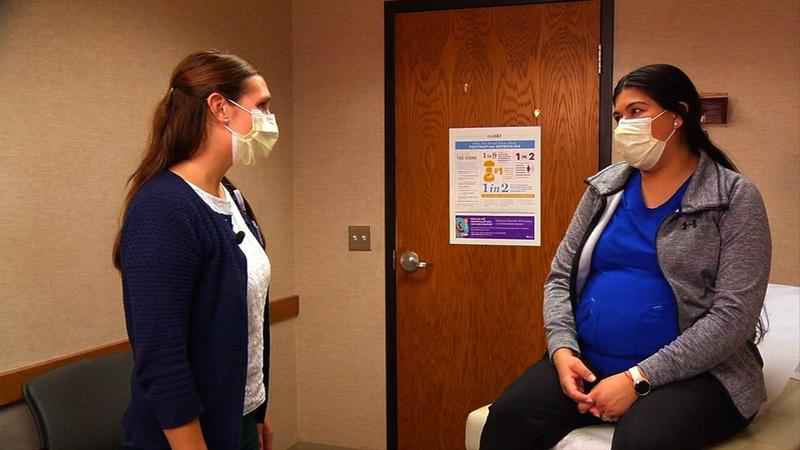Willmar doctor shares how first-of-its-kind program is addressing dearth of OB-GYN care in rural America
[anvplayer video=”5066654″ station=”998122″]
About two hours west of the Twin Cities metro, the Carris Health Clinic in downtown Willmar provides OB-GYN care for people in the southwest part of the state.
“I’ve had a patient drive an hour to come and see me just for routine prenatal care,” said Dr. Laura McDowell, who’s been treating patients there for several months. “We’re feeling the crunch. We still have a lot of patients that we are wanting and needing to care for and just not enough people to see them.”
She’s seen firsthand the challenges that patients face in rural areas where they have to travel distances to see a provider.
“You have to take at least a half-day off of work to be able to attend an appointment just with a roundtrip travel of two hours, sometimes three hours for some people potentially," she said. "There’s a lot of unknowns. Labor often comes out of nowhere sometimes the water can break and the labor happens and things can go really fast. … There are times where you do have deliveries on the side of the road, not just here, that can happen anywhere.”
McDowell is the first graduate of the University of Wisconsin-Madison Department of Obstetrics and Gynecology rural track program, a first of its kind in the nation. For six months of her four years of residency, she spent time in rural communities across Wisconsin.

[KSTP]
“What stood out to me was, well, certainly there are providers out in these locations but some of them were only one provider and not necessarily by choice,” she said. “Just the storage of having OB-GYN physicians in these locations was a concern.”
There’s a shortage of OB-GYN doctors nationwide. The deficit is expected to reach 5,170 full-time equivalent physicians by 2030, according to a March Health Resources and Services Administration report, which is under the Dept. of Health and Human Services.
The report attributes the shortage to an increase in the demand for OB-GYNs at a time when the supply of physicians is decreasing.
The UW program started in 2017 and each year, one resident is matched into it.
“We felt like the best way to start in confronting this crisis for OB-GYNs was to be the first place in the country to start a program like this,” said Dr. Ryan Spencer, the OB-GYN residency director. “I’m always very honest that I understand that our program in and of itself may not be able to solve all the problems in the crises, even here in the state of Wisconsin. But what it is is an opportunity to help create a pipeline of physicians going into rural settings.”
Dr. Spencer explained 27 out of 72 counties in Wisconsin are without an OB-GYN physician. Nearly half of all of the counties in the United States are without a doctor in this specialty, according to American College of Nurse-Midwives.
“Even though there are great physicians and other health care providers in these small communities providing great care to patients, those in areas that don’t have these health care providers are at higher risk for complications related to their medical outcomes and that’s true for pregnancy and childbirth as well,” he said.
In addition to the physician shortage, there are fewer birthing centers each year. Data from the Minnesota Department of Health show there were 33 counties without birth services in 2020. Across the border in Wisconsin, the University said the latest numbers show there were 24 counties without birthing centers in 2016.
“In the last couple decades we’ve actually seen a worsening of closures of hospitals and obstetric care units throughout the United States,” Spencer said. “We’ve not seen it improving. The pandemic has exacerbated some of these hospital closures as well. So the problem really is multifactorial and we felt like the best way we could help confront that problem was to create a pipeline and a system and a program that can be replicated.”
Spencer said they are already talking with other medical schools about adopting a rural OB-GYN program. The University of Iowa has launched its own rural track.
McDowell explained there are multiple factors that may be contributing to the physician shortage.
“Issues of not wanting to be in a location that doesn’t have as many resources as you would have in a main academic center,” McDowell said. “Having to be on call more frequently, not having those other people to help support you in that. In terms of more family life, finding meaningful work for a spouse can be a challenge and having different opportunities for your children can also be a concern for people.”
She said, however, it’s been a rewarding experience to practice medicine in an underserved area and she encourages others to explore a similar path.
“I hope to have more partners to have people come and experience the joys of rural medicine and practicing in a rural setting,” McDowell said.